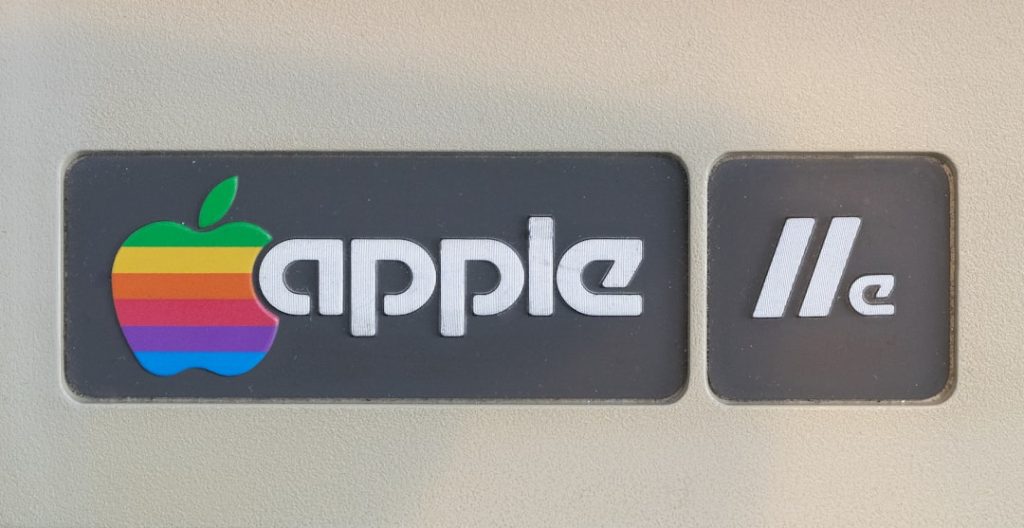Technology has become an integral part of our daily lives, but how much do we really know about its history and the fascinating facts behind it? From the earliest inventions to the latest innovations, there are countless trivia questions about technology that can surprise even the most tech-savvy individuals. In this article, we will explore some captivating tech history trivia, specific technology trivia, and pop culture tech trivia that you might not know.
The Birth of Technology

The First Computer
When we think of computers, we often imagine sleek, modern devices. However, the first computer, known as the ENIAC (Electronic Numerical Integrator and Computer), was a massive machine that took up an entire room. Developed in the 1940s, ENIAC was primarily used for military calculations during World War II. It weighed about 30 tons and used approximately 18,000 vacuum tubes.
Despite its size, ENIAC was a groundbreaking invention that laid the foundation for modern computing. It could perform complex calculations much faster than any human, marking a significant leap forward in technology. The machine was programmed using a series of switches and cables, a far cry from today’s user-friendly interfaces.
The development of ENIAC was a monumental task that required the collaboration of many engineers and mathematicians. The project was led by John Mauchly and J. Presper Eckert at the University of Pennsylvania. Their work not only advanced technology but also paved the way for future innovations in computing.
The Origin of the Internet
The internet, which we now use daily for almost everything, has an intriguing origin story. The concept of a global network started as a project called ARPANET in the late 1960s. Funded by the U.S. Department of Defense, ARPANET aimed to create a communication network that could withstand potential disruptions, such as a nuclear attack. The first message ever sent over ARPANET was “LO,” an attempt to log in to a computer at Stanford from UCLA, but the system crashed after just two letters.
ARPANET’s development marked the beginning of the digital age. The network initially connected only a handful of universities and research institutions. However, its potential for broader communication and information sharing was quickly recognized, leading to rapid expansion.
One of the key technologies that made ARPANET possible was packet switching. This method of data transmission allowed information to be broken into smaller packets and reassembled at the destination, making the network more efficient and robust. Over time, ARPANET evolved into the modern internet, transforming how we communicate and access information.
The Evolution of Telecommunications
Telecommunications have come a long way since the early days of the telegraph. The invention of the telephone by Alexander Graham Bell in 1876 revolutionized personal and business communication. This innovation allowed people to speak directly to each other over long distances, significantly reducing the time it took to convey messages.

The development of wireless communication further transformed the industry. Guglielmo Marconi’s successful transmission of radio waves across the Atlantic Ocean in 1901 paved the way for modern wireless communication technologies. Radio, television, and eventually mobile phones all owe their existence to these early experiments in wireless technology.
The rise of digital communication in the late 20th century marked another significant leap. The advent of email, instant messaging, and VoIP (Voice over Internet Protocol) services has made global communication faster and more accessible than ever before. These advancements have not only connected people but also facilitated the growth of global businesses and economies.
Tech Industry Trivia
Apple’s First Logo
Before the iconic bitten apple logo, Apple had a very different emblem. The original logo, designed by co-founder Ronald Wayne, depicted Isaac Newton sitting under an apple tree. It was soon replaced by the more modern and recognizable logo designed by Rob Janoff in 1977.
The decision to change the logo was driven by a desire for simplicity and modernity. The original logo was intricate and detailed, which made it difficult to reproduce on smaller devices and promotional materials. The new logo, a simple apple with a bite taken out of it, was much more versatile and immediately recognizable.

The bite in the apple logo has been the subject of much speculation. Some believe it represents a play on words, as “bite” sounds like “byte,” a unit of digital information. Others think it symbolizes knowledge, referencing the biblical story of Adam and Eve. Regardless of its true meaning, the bitten apple has become one of the most iconic logos in the world.
Google’s First Server
Google’s first server was built in a storage cabinet made of Lego bricks. This creative solution was implemented by the company’s founders, Larry Page and Sergey Brin, during their time at Stanford University. The Lego server was not only a cost-effective choice but also allowed for easy modifications and expansions.
The use of Lego bricks for their server was a testament to the founders’ ingenuity and resourcefulness. At the time, they were operating on a limited budget and needed a flexible solution that could grow with their needs. The colorful and playful appearance of the server also reflected the innovative and unconventional spirit of the young company.

Google’s early infrastructure played a crucial role in its success. The company’s search engine was designed to handle large volumes of data and deliver fast, relevant results. The Lego server was just the beginning of Google’s journey to becoming the tech giant it is today, with a vast network of data centers around the world.
The First Mobile Phone Call
The first mobile phone call was made by Martin Cooper, a Motorola executive, in 1973. Using a prototype of the Motorola DynaTAC, Cooper called his rival at Bell Labs to announce that he was calling from a mobile phone. The DynaTAC was a far cry from today’s smartphones, weighing around 2.5 pounds and offering only 30 minutes of talk time.
The development of the DynaTAC was a significant milestone in the history of telecommunications. It marked the beginning of the mobile phone industry, which has since evolved into a global market with billions of users. Early mobile phones were bulky and expensive, but they laid the groundwork for the sleek, multifunctional devices we use today.

The first mobile phone networks were analog systems, which provided limited coverage and call quality. However, the introduction of digital networks in the 1990s revolutionized mobile communication. Digital technology enabled better sound quality, increased network capacity, and the introduction of new services like text messaging and mobile internet.
The Rise of Tech Giants
The tech industry has seen the rise of several giants that have shaped the modern world. Companies like Microsoft, Apple, Google, and Amazon have revolutionized various sectors, from personal computing to online retail. Their innovations have not only transformed industries but also changed how we live and work.
Microsoft, founded by Bill Gates and Paul Allen in 1975, played a crucial role in popularizing personal computers. The company’s Windows operating system became the standard for PCs, making computing accessible to millions of people worldwide. Microsoft’s software products, including Office and Internet Explorer, have become essential tools for businesses and individuals alike.
Apple, known for its innovative design and user-friendly products, has had a significant impact on the tech industry. The company’s introduction of the iPhone in 2007 revolutionized the mobile phone market, setting new standards for design, functionality, and user experience. Apple’s ecosystem of devices and services has created a loyal customer base and established the company as a leader in consumer technology.
Google, initially a search engine, has expanded its services to include advertising, cloud computing, and hardware products. The company’s mission to “organize the world’s information and make it universally accessible and useful” has driven its growth and diversification. Google’s products, such as Gmail, Google Maps, and Android, have become integral parts of our daily lives.
Amazon, founded by Jeff Bezos in 1994, started as an online bookstore but quickly expanded into a global e-commerce giant. The company’s innovative approach to online retail, including features like one-click ordering and customer reviews, has transformed the shopping experience. Amazon’s ventures into cloud computing (AWS), streaming services (Prime Video), and smart home devices (Echo) have further solidified its position as a tech leader.
Pop Culture Tech Trivia
The Origin of the Term “Bluetooth”
The term “Bluetooth” is derived from the name of a 10th-century Danish king, Harald “Bluetooth” Gormsson. Known for uniting Denmark and Norway, King Harald’s nickname was chosen to symbolize the unification of communication protocols. The Bluetooth logo combines the runic letters H and B, representing Harald Bluetooth’s initials.
The choice of the name “Bluetooth” reflects the collaborative nature of the technology. Bluetooth was developed as a standard for short-range wireless communication, enabling devices from different manufacturers to connect and communicate seamlessly. The name symbolizes the bridging of gaps and the creation of a unified standard.

The Bluetooth technology has become a ubiquitous part of modern life. It is used in a wide range of devices, from smartphones and laptops to headphones and smart home gadgets. The ability to connect devices wirelessly has simplified many aspects of our daily routines, from listening to music to transferring files.
The First Video Game Easter Egg
The concept of Easter eggs in video games originated with the 1979 Atari game “Adventure.” Created by Warren Robinett, the game featured a hidden room containing the message “Created by Warren Robinett.” This was a way for Robinett to secretly credit himself, as Atari did not allow developers to include their names in the games at that time.
The discovery of this Easter egg added an extra layer of excitement and mystery to the game. Players enjoyed the challenge of finding hidden secrets, and the concept quickly gained popularity. Today, Easter eggs are a common feature in video games, movies, and software, providing hidden surprises for those who explore beyond the surface.

Easter eggs have evolved to become more elaborate and creative. They can range from hidden messages and secret levels to playful references and inside jokes. These hidden elements often reward players with unique experiences and a sense of accomplishment, adding to the overall enjoyment of the game.
The Meaning Behind “Wi-Fi”
Contrary to popular belief, Wi-Fi does not stand for “Wireless Fidelity.” In fact, Wi-Fi is a trademarked term coined by the branding company Interbrand. The name was created as a catchy and user-friendly alternative to the technical term “IEEE 802.11b Direct Sequence.”
The term “Wi-Fi” was designed to be easy to remember and market. The Wi-Fi Alliance, the organization responsible for promoting the technology, wanted a name that would resonate with consumers and convey the idea of wireless connectivity. The branding was successful, and “Wi-Fi” quickly became synonymous with wireless internet access.


